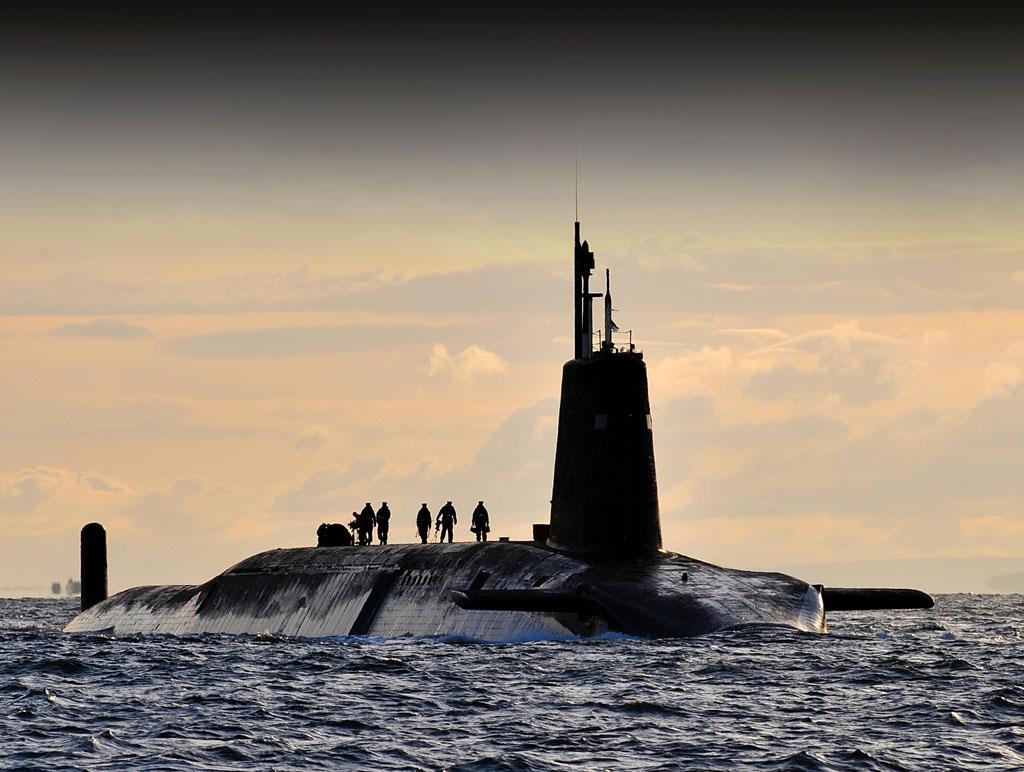
As a former Royal Navy submarine commander, I read with interest Hugh White’s suggestion that Australia may, in the decades to come, need to confront the issue of whether it should have its own nuclear weapons. In his new book, How to defend Australia, White argues that Australia can no longer rely in the long term on the US’s ‘nuclear umbrella’.
I’ve spent some time post-service researching the justification for the UK’s decision to acquire, and sustain, a submarine-launched nuclear-armed ballistic-missile system, and the negative effect that decision has had on our armed services and the navy in particular. The UK experience provides some lessons for any state that’s thinking of acquiring a ‘nuclear deterrent’ for the first time.
The first question one must ask is whether nuclear deterrence actually works. Counter to Cold War ideology, and with the benefit of hindsight, it’s now quite clear that nuclear weapons have never deterred any aggression against a nuclear-armed state or a state such as Australia that’s a beneficiary of US extended nuclear deterrence.
Some would argue that the 1962 Cuban missile crisis was such a time. However, Khrushchev backed down not for fear of massive US retaliation but because he realised, only just in time, that the biggest danger came from losing control of his own deployed nuclear-armed forces who might start a war the USSR didn’t want.
It’s also significant that US nuclear weapons were irrelevant in the Vietnam War, in which Australia was deeply involved with its largest military commitment since World War II.
Furthermore, and more recently, the risk of nuclear war through miscalculation, mistake or malfunction has, if anything, increased. The much-respected Royal Institute of International Affairs, Chatham House, in its 2014 report Too close for comfort, documented some 13 separate occasions when the world has come extremely close to that happening. Two recent books, former UK ambassador to Moscow Rodric Braithwaite’s Armageddon and paranoia: the nuclear confrontation and Daniel Ellsberg’s The Doomsday Machine: confessions of a nuclear war planner, provide compelling evidence of the dangers inherent in possessing nuclear weapons.
Despite this, and without any apparent current or probable future existential threat—why else, for example, have the UK Trident missiles been at ‘several days’ notice to fire’ since 1994?—the UK has decided to continue with its ‘independent nuclear deterrent’ into the 2060s at an estimated cost of around £150 billion.
However, for all the enormous expenditure, the UK Trident is not independent. In reality, the US—which leases its missiles to the UK from a common US pool, and whose technical design and support for every part of the weapon system to target and launch them is critical—can frustrate the UK from using Trident if it disapproves. So, unlike France, the UK has opted for nuclear dependence on the US.
A force of four nuclear-armed ballistic-missile-equipped nuclear-powered submarines (SSBNs) is required to maintain one continuously on patrol. In addition, to maintain its independence from the US, Australia, like France, would need to design and manufacture its own missiles and associated space-launch system, warheads, specialised satellite navigation, targeting and communications systems. And for that it would need to acquire nuclear submarine design, build, operation and maintenance skills. The UK’s decision to rely upon the US for all of that has predictably resulted in a heavy political as well as still onerous financial cost.
Then there’s the need for a nuclear-powered attack submarine (SSN), plus at least one surface ship and maritime patrol aircraft to protect the deployed SSBN. Experience shows that at least six SSNs are required to have one always available for this task. Keeping one UK SSBN continuously at sea and undetected places huge and growing strains on a now very depleted and imbalanced navy.
In fact, the cost of maintaining a UK ‘deterrent’ has led to the hollowing out of all the UK’s conventional armed forces to the point where it cannot deter, let alone respond effectively to, aggression against the homeland. For example, the Royal Navy’s fighting fleet has been reduced to six destroyers and 13 frigates—alarmingly, the same numbers of destroyers sunk and frigates damaged during the 1982 Falklands War. There are new frigates on order, but these barely sustain the number of these key workhorses in the navy’s core role of protecting maritime trade and graduated conventional deterrence.
Already the Royal Navy is struggling to have enough units to escort one of the two supercarriers, HMS Queen Elizabeth and HMS Prince of Wales. How deeply ironic it is that, as we may be about to exit the European Union, we’re having to call on European navies to help protect UK oil tankers in the Gulf because we can no longer do it on our own.
Admiral Lord Nelson famously wrote, ‘Were I to die at this moment “want of frigates” would be found stamped on my heart.’ A growing number of Royal Navy admirals are now expressing similar sentiments.
Australia, with no nuclear propulsion or missile experience to build on, must either be dependent on US technology and support, or embark on an even more costly all-Australian project. I would urge those who advocate either of these approaches to take a long, hard look at the counterproductive effect that sustaining the four UK Trident submarines has had on the defence of the homeland. Simply put, it has denied our armed services, especially the navy, the equipment and personnel they need to meet the wide variety of today’s actual threats.
Our ‘nuclear deterrent’ has degraded our conventional deterrence capability such that a ‘last resort’ weapon system would too quickly become the only option left, with associated loss of credibility.